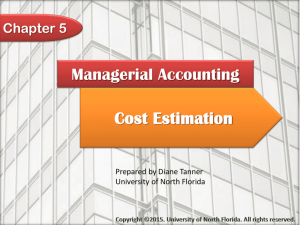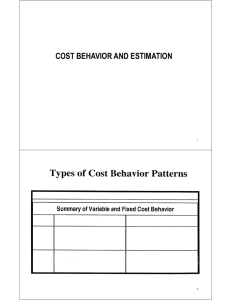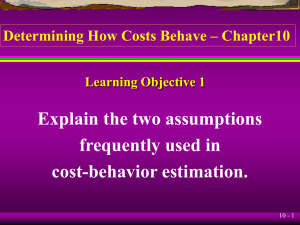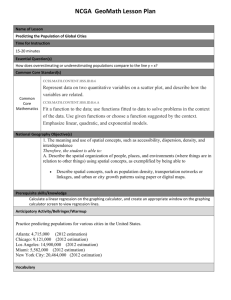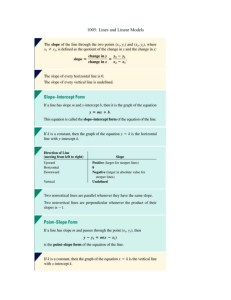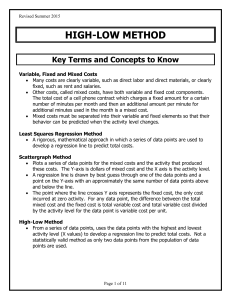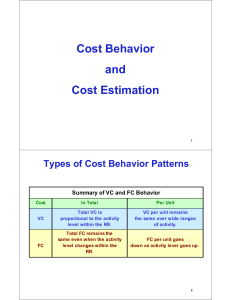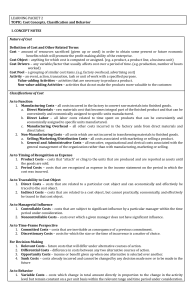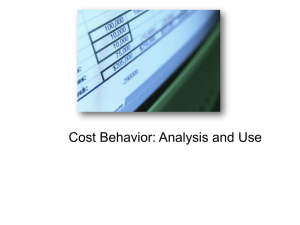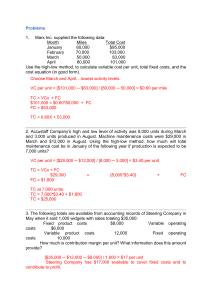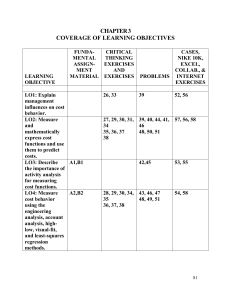PPT10
advertisement
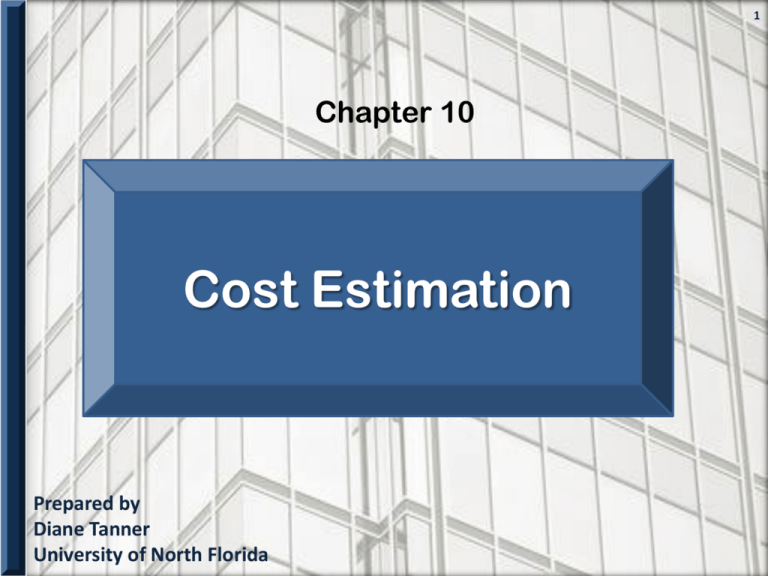
1 Chapter 10 Cost Estimation Prepared by Diane Tanner University of North Florida 2 Cost Estimation Purpose is to measure a relationship based on data from past costs and the related level of an activity i. e., determine the cost equation A cause-and-effect relationship may arise as a result of A physical relationship between the level of activity and costs A contractual arrangement Knowledge of operations 3 Cost Functions Format of cost function TC = VCx + TFC Y = mX + b Y = a + bX M = VC per unit = slope b = TFC = y-intercept Dependent variable = y Independent variable = x Assumptions Variations in the level of a single activity (cost driver) explain the variation in the related total cost Costs behave in a linear manner within the relevant range of activity A linear cost function is represented by a straight line 4 Sample Cost Functions Fixed cost function Y = 250 Variable cost function Y = 4.56X Mixed cost function (semi-variable) Y = 4.56X + 250 5 Cost Estimation Methods Industrial engineering method Estimates cost functions by analyzing the relationship between inputs and outputs in physical terms Conference method Estimates cost functions based on analysis and opinions about costs and their drivers gathered from various departments of a company Account analysis method Estimates cost functions by classifying various cost accounts with respect to the identified level of activity Reasonably accurate, cost-effective, and easy to use Quantitative analysis methods Mathematical models – high-low, regression Quantitative Analysis of Cost Functions Step 1: Identify the dependent variable The cost being estimated or predicted, Y Step 2: Identify the independent variable The independent variable, i.e., the cost driver, X Step 3: Collect data Step 4: Plot the data - scattergraph Step 5: Estimate the function Regression method or high-low method Step 6: Evaluate the cost driver 6 7 High-Low Method Advantages Simple Gives quick insight in cost-activity relationships Disadvantages Uses extreme data points Ignores much of the data Steps: Choose high and low activity levels Determine the slope (VC per unit) Plug the slope and one data point into the cost equation to solve for TFC Write the cost equation in standard form (replacing VC and FC with the correct amounts) Y = VCx + FC 8 Regression Analysis A statistical technique that measures the average amount of change in the dependent variable associated with a unit change in the independent variable Excel generates output providing cost function components Uses all the data points Provides a more accurate cost estimation formula than the high-low method 9 Excel Regression Output Cost equation: Y = 177.40x + 3,121 Y-intercept X-variable 10 Evaluating Cost Drivers Three criteria Economic plausibility Does it make sense? Goodness of fit Indicates how good a predictors of cost the equation is R2 Significance of independent variable Indicates the percentage of the total variation in the y-values (total cost) that is explained by the regression equation. Steep slope Indicates the strength of the relationship between the cost driver and the costs incurred The End 11
